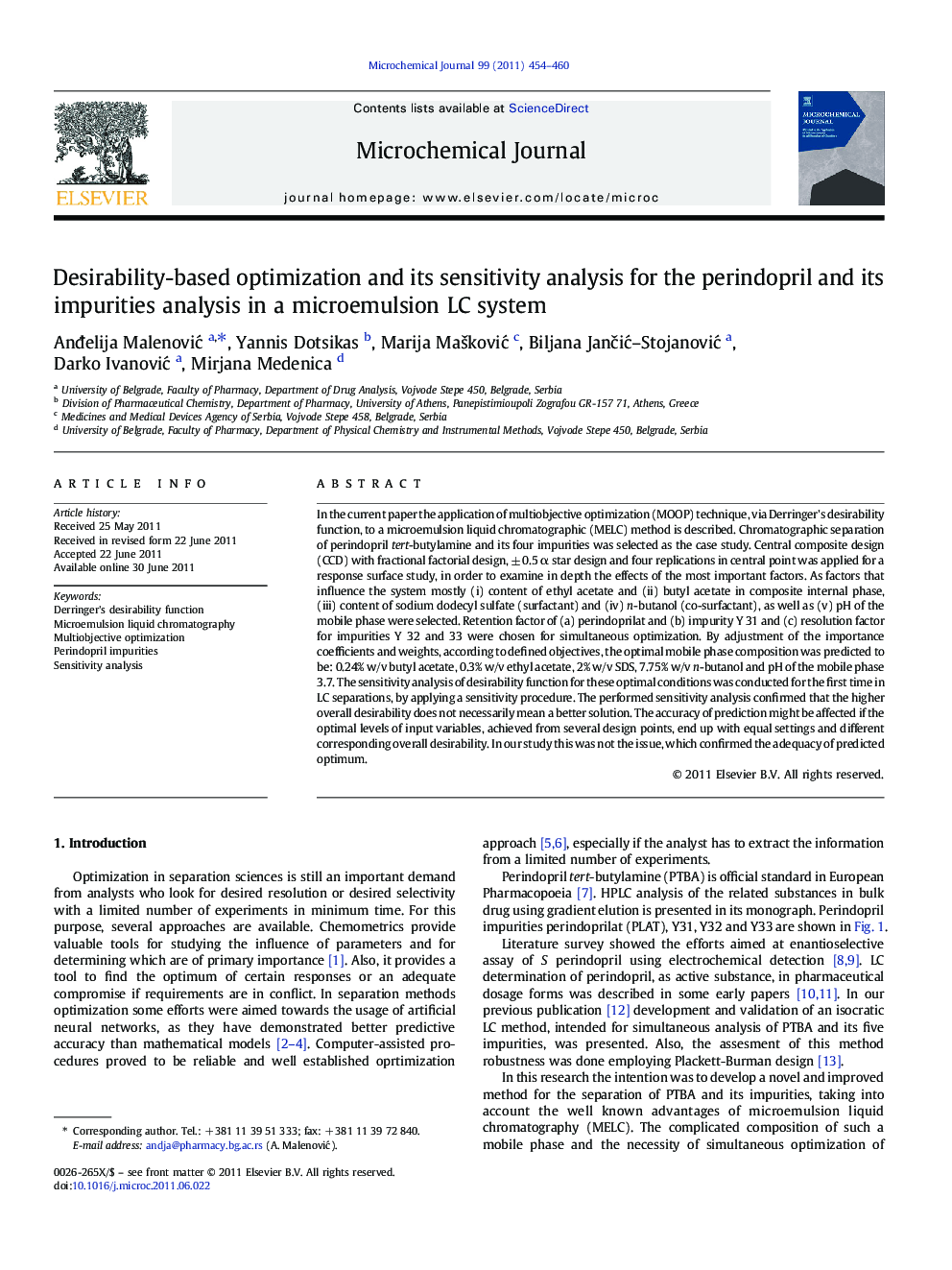| Article ID | Journal | Published Year | Pages | File Type |
|---|---|---|---|---|
| 10556872 | Microchemical Journal | 2011 | 7 Pages |
Abstract
In the current paper the application of multiobjective optimization (MOOP) technique, via Derringer's desirability function, to a microemulsion liquid chromatographic (MELC) method is described. Chromatographic separation of perindopril tert-butylamine and its four impurities was selected as the case study. Central composite design (CCD) with fractional factorial design, ± 0.5 α star design and four replications in central point was applied for a response surface study, in order to examine in depth the effects of the most important factors. As factors that influence the system mostly (i) content of ethyl acetate and (ii) butyl acetate in composite internal phase, (iii) content of sodium dodecyl sulfate (surfactant) and (iv) n-butanol (co-surfactant), as well as (v) pH of the mobile phase were selected. Retention factor of (a) perindoprilat and (b) impurity Y 31 and (c) resolution factor for impurities Y 32 and 33 were chosen for simultaneous optimization. By adjustment of the importance coefficients and weights, according to defined objectives, the optimal mobile phase composition was predicted to be: 0.24% w/v butyl acetate, 0.3% w/v ethyl acetate, 2% w/v SDS, 7.75% w/v n-butanol and pH of the mobile phase 3.7. The sensitivity analysis of desirability function for these optimal conditions was conducted for the first time in LC separations, by applying a sensitivity procedure. The performed sensitivity analysis confirmed that the higher overall desirability does not necessarily mean a better solution. The accuracy of prediction might be affected if the optimal levels of input variables, achieved from several design points, end up with equal settings and different corresponding overall desirability. In our study this was not the issue, which confirmed the adequacy of predicted optimum.
Keywords
Related Topics
Physical Sciences and Engineering
Chemistry
Analytical Chemistry
Authors
AnÄelija MalenoviÄ, Yannis Dotsikas, Marija MaÅ¡koviÄ, Biljana JanÄiÄ-StojanoviÄ, Darko IvanoviÄ, Mirjana Medenica,
